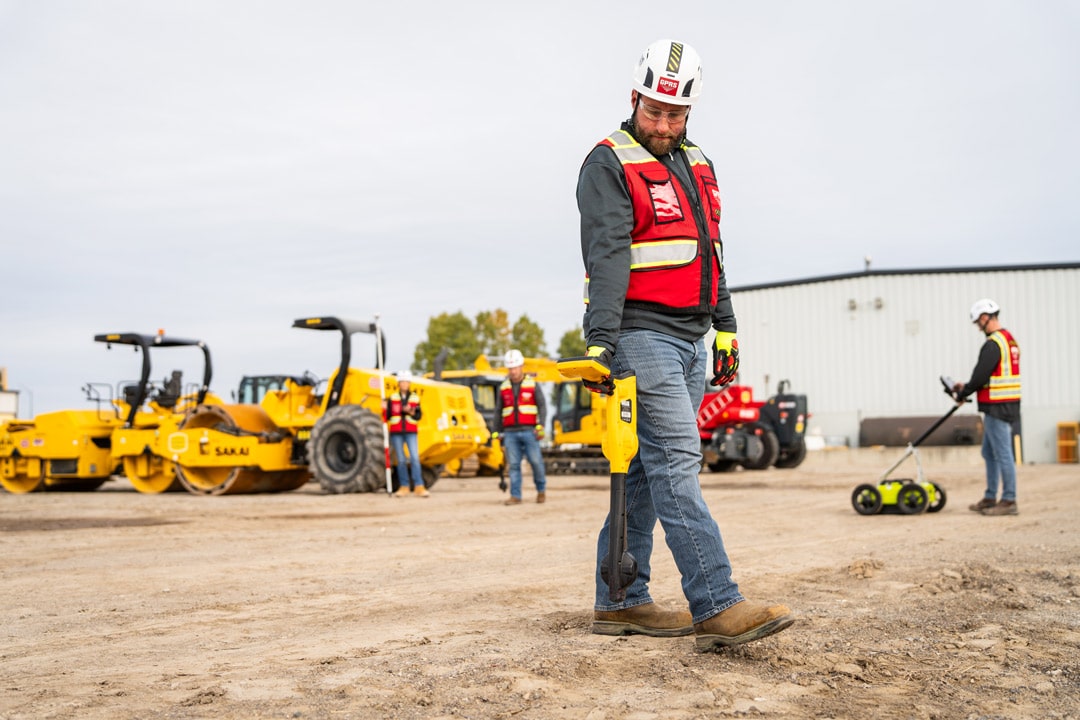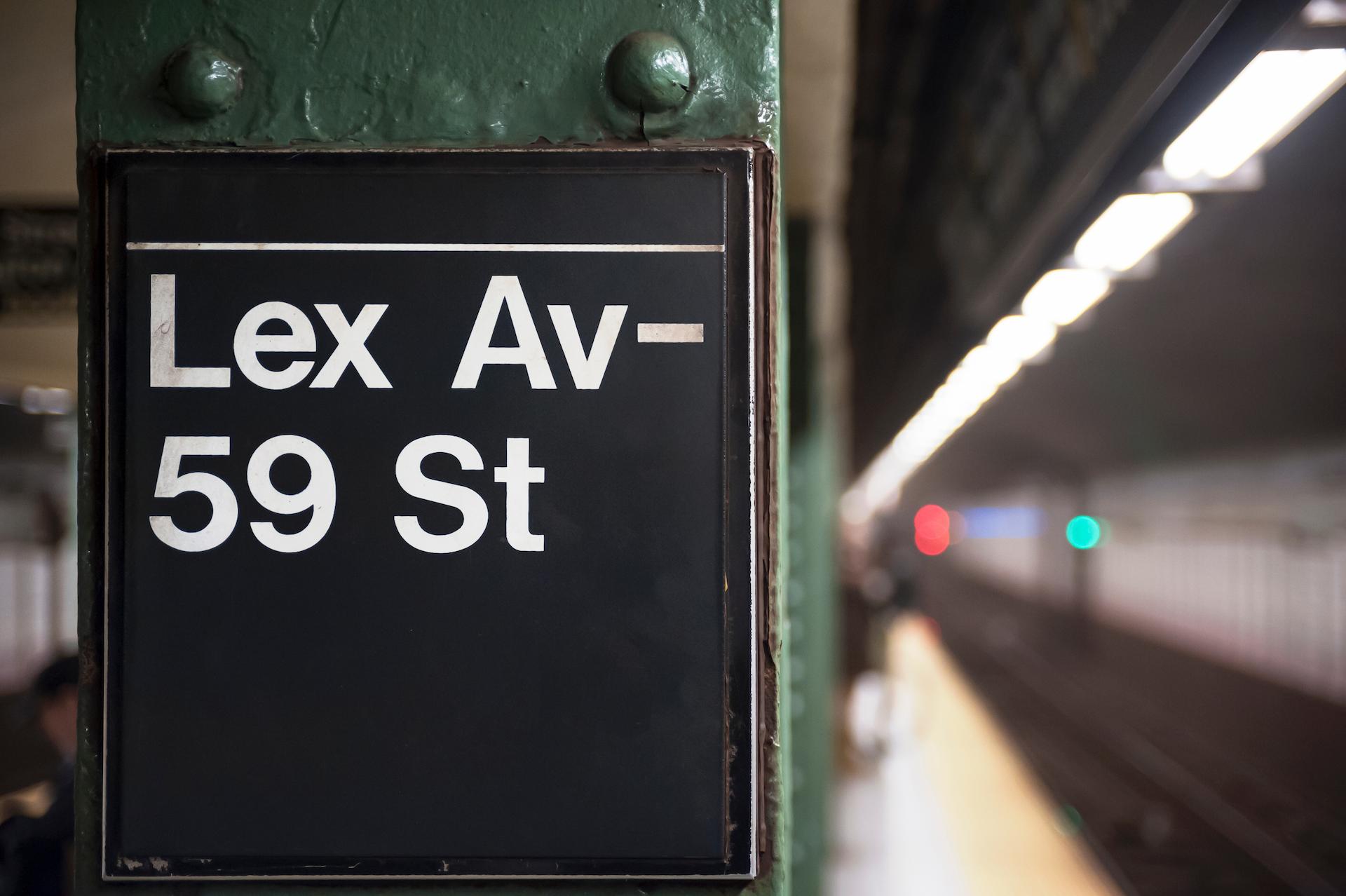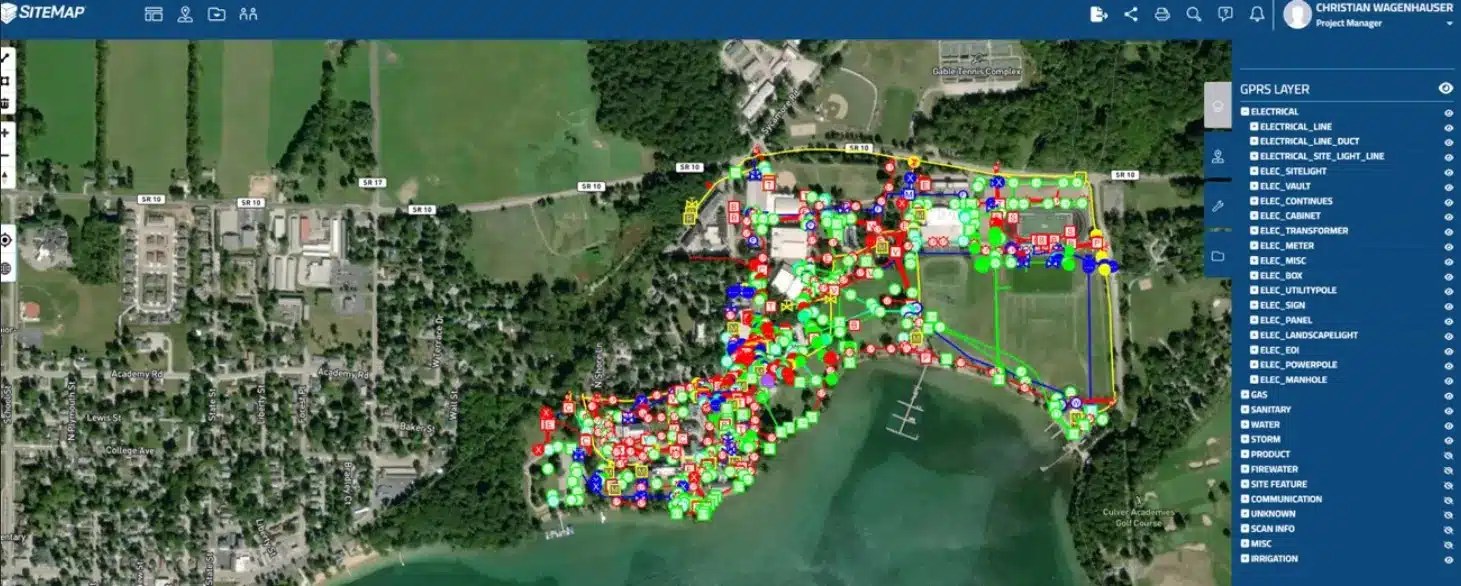According to a 2022 report by MTA, the subway system in NYC has a daily ridership of approximately 3.2 million, while their bus system has a daily ridership of 1.4 million. That’s a huge amount of people relying on this vital resource. Over time, these lines have become degraded, crowded, and inefficient. To help combat this, a plan was proposed to expand and revamp the system.
The Second Avenue Subway project in New York City is a monumental and somewhat complex undertaking that has captured the attention of urban planners, engineers, and the public alike. With a staggering $3.4 billion budget, this project represents a significant leap forward in the city’s transportation infrastructure. However, such ambitious endeavors are not feasible without cutting-edge technologies like those offered by GPRS as well as SiteMap® (patent pending), powered by GPRS. What is the Second Avenue Subway project? What is the critical role of utility mapping and site mapping software? And how are these technologies making large-scale infrastructure projects possible? Read more below to find out the answer to this and more!
The Second Avenue Subway Project: A Brief Overview
The Second Avenue Subway project, often referred to as the “T Line,” is an expansion of New York City’s subway system that aims to alleviate congestion on the Lexington Avenue Line, one of the busiest subway lines in the world. The project’s first phase, which opened in 2017, extended the Q line from 63rd Street to 96th Street. The current phase, now funded with a $3.4 billion federal investment, will extend the line northward from 96th Street to 125th Street, adding three new stations at 106th Street, 116th Street, and 125th Street. These additions will also include ADA accessible stops for 106th, 116th, and 125th Streets with about 300,000 daily riders totaling Phase 1 and Phase 2.
This phase of the project is crucial for providing better transit access to East Harlem, an underserved area in terms of public transportation. The new stations will not only improve connectivity but also spur economic development and job creation in the neighborhood.
This plan is phase two of a project that has long been coming. Planning for the Second Avenue Subway began in the 1920s, when construction on the city’s transit system was far cheaper. The first phase opened in 2017, after it had been in the planning phase for nearly 100 years before.
The Second Avenue Subway was originally meant to include 16 stations, but so far only includes three, 72nd, 86th and 96th streets. This 1.5 mile short subway, often referred to as a “stubway,” cost $4.6 billion, which grew from an original budget for the entire project of $335 million in the mid-twentieth century. making it by far the most expensive train track in world history. Even when considering inflation, the cost per station was 25 times higher than back when the system was originally built in 1904.
Despite technically starting in the 1970s, the plan has gone through many changes and many budgets throughout the years. Phase 1 extended the Q line from 63rd St to 96th St and was the city’s biggest expansion of the subway system in 50 years. Service opened on January 1, 2017, with additional stations at 72nd St and 86th St. Since then, the Second Avenue Subway has carried more than 130 million passengers, with the carry of more than 200,000 passengers during a pre-pandemic day. A tunnel segment for Phase 2 was built in the 1970s, stretching from 110th St to 120th St along Second Avenue.
The Role of Federal Funding
Securing $3.4 billion in federal funding was an important moment for the Second Avenue Subway project. This substantial investment underscores the federal government’s commitment to enhancing urban infrastructure and improving public transportation. The funding was set to cover various aspects of the project, including construction, engineering, and essential technological implementations.
Senator Chuck Schumer and Representative Adriano Espaillat were instrumental in securing this funding, emphasizing the project’s importance for New York City’s future. According to Schumer, “The Second Avenue Subway Phase II project advancing into project engineering is great news for the people of East Harlem and all of New York City. Long envisioned – but unfortunately too long delayed – the project is now full-speed ahead. I was pleased to secure the historic $23 billion in grant funding for mass transit capital projects in the Bipartisan Infrastructure & Jobs law, and will fight to ensure this critical project gets its fair share.”
The Importance of Utility Mapping and Site Mapping Software
Large-scale infrastructure projects like the Second Avenue Subway are complex undertakings that require meticulous planning and execution. One of the critical challenges is navigating the dense network of existing underground utilities in New York City. This is where technologies from companies like GPRS and SiteMap® become indispensable.
GPRS and SiteMap®: The Secret Tool
GPRS specializes in utility locating services that are crucial for avoiding costly and dangerous utility strikes during construction. With a proven 99.8% accuracy rating in utility locating and concrete scanning, our rapid response team of SIM-certified Project Managers provide services that are trustworthy and reliable.

Our services include:
Utility Locating: Using a suite of complementary technologies, GPRS can accurately detect and map underground utilities such as water lines, gas pipes, electrical conduits, and communication cables.
Concrete Scanning: Scanning concrete with GPR reveals rebar, post tension cables, electrical conduits, voids, and more. This is also an effective method of structural review including concrete slab measurement and rebar spacing.
3D Laser Scanning: Accurate measurements help you avoid expensive mistakes, reworks, and change orders. GPRS 3D Laser Scanning services provide 2-4mm accuracy by capturing 2 million data points per second, for efficient planning, design, and construction.
And much more! Our multitude of services, including NASSCO-certified video pipe inspection, pinpoint leak detection, reality capture, and 3D Photogrammetry services can deliver up-to-date and accurate construction as-builts, existing condition drawings, 2D CAD drawings, 3D BIM models, 3D mesh models, digital twins, point clouds, updated floor plans (FLRPLN), and more for construction design, prefabrication, clash detection, facility modifications, and asset management.
SiteMap®
SiteMap® offers more than just high-resolution mapping solutions, and is a crucial tool for any major project. Our services include:
Data Integration: SiteMap® integrates utility data into comprehensive, interactive maps, making it easier for engineers and project managers to visualize and plan construction activities. It also provides exception data portability between SiteMap’s GIS interface and any existing GIS platform you may already have.
Interactive Maps: GPRS uses SiteMap® to provide GPS-located, layered, interactive maps of underground utilities, which are invaluable for coordinating complex construction projects.
Easily Shared: SiteMap® is the easiest way to access your data, securely shareable with anyone to whom you give access, in a way that makes sense. Those with SiteMap® access can see their data from anywhere in the world, 24/7, using their favorite device.
SiteMap’s greatest strength is its flexibility. Almost any location data and documentation can be uploaded and organized. Examples of information a user can view and store include:
- Utility layouts
- As-built drawings
- 3D models
- Floor plans
- Structural drawings
- Subsurface void information
- Drone Imagery
- Sewer and manhole video inspection data
- Underground storage tank information
- Aboveground storage tank information
As more information becomes available, the system can grow with the user. Additionally, SiteMap® can export data to other systems. Our clients can take the uploaded information and use it on their platform of choice. GPRS’ elite Mapping & Modeling team can provide these for you, as well as many other useful deliverables, such as digital twins, and virtual tours.
Utility Mapping Cost: An Investment in Safety and Efficiency
One of the common questions that arises during large infrastructure projects is, “What is the utility mapping cost?” While the initial cost of utility mapping may seem significant, it is a necessary investment that pays off in the long run. Accurate utility mapping helps prevent utility strikes, which can lead to expensive repairs, project delays, and safety hazards. By investing in utility mapping services from GPRS and in turn, SiteMap®, project managers can ensure that construction proceeds smoothly and safely.
Utility mapping costs a fragment of what an OSHA violation does, or a utility strike repair, or even worse, a wrongful death lawsuit. $61 billion is the average cost of utility strikes in the USA. Avoid these incidents and the cost by being smart from the start with SiteMap®, backed by GPRS’ 99.8% accuracy.
Map of Underground Utilities: Essential for Planning and Execution
A detailed map of underground utilities is a critical tool for any construction project. In the context of the Second Avenue Subway project, such maps enable engineers to:
Identify Potential Obstacles: Knowing the location of existing utilities helps in identifying potential obstacles and planning around them.
Coordinate with Utility Companies: Accurate maps facilitate coordination with utility companies to relocate or protect utilities during construction.
Enhance Safety: By avoiding utility strikes or other obstacles, construction teams can work more safely, reducing the risk of accidents and injuries.
SiteMap®: Revolutionizing Infrastructure Projects
SiteMap® is revolutionizing the way infrastructure projects are planned and executed. This technology and platform allows for the creation of interactive maps that integrate various data sources, providing a comprehensive view of the project area.
The benefits of site mapping software (including SiteMap®) include:
Enhanced Visualization: Interactive maps provide a clear and detailed view of the project site, making it easier to identify and address potential issues.
Improved Collaboration: Site mapping software enables better collaboration among project stakeholders, ensuring that everyone has access to the same accurate information.
Streamlined Planning: By integrating various data sources, site mapping software streamlines the planning process, allowing for more efficient and effective project management.
The Broader Impact of the Second Avenue Subway Project
The Second Avenue Subway project is not just about improving public transportation; it represents a broader commitment to modernizing urban infrastructure and enhancing the quality of life for New Yorkers. The new subway line will:
Reduce Congestion: By providing an alternative to the overcrowded Lexington Avenue Line, the new subway line will help reduce congestion and improve the overall efficiency of the transit system.
Boost Economic Development: Improved transit access to East Harlem is expected to spur economic development in the area, attracting businesses and creating jobs.
Enhance Connectivity: The new subway line will improve connectivity within the city, making it easier for residents to travel to work, school, and other destinations.
Improve ADA Conditions: With three new stops, those with disabilities will now be able to get around the city much easier than before.
Utility locating and mapping services are essential for navigating the complex network of underground (and aboveground) utilities and anomalies in urban areas. It’s easy to see that the integration of these technologies in infrastructure projects will continue to drive progress and improve the quality of life for people around the world. The Second Avenue Subway project is a shining example of how technology, funding, and vision can come together to create lasting positive change.
In turn, the innovative technologies provided by GPRS and SiteMap® are paving the way for safer, smarter, and more efficient infrastructure projects, ensuring that cities like New York can continue to thrive and grow.
See your site smartly with SiteMap®, contact us today to learn more about how we can help you visualize your future.


